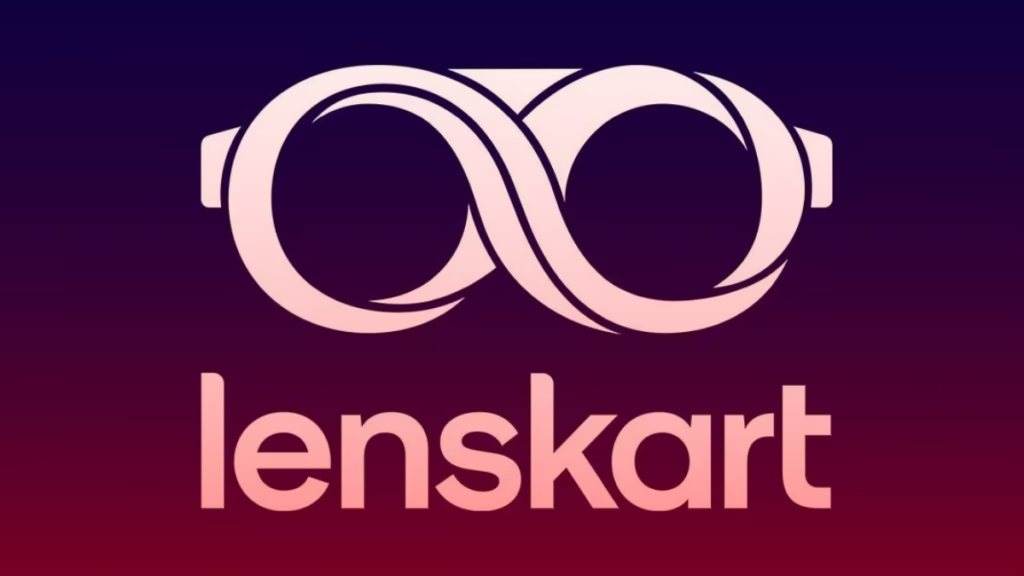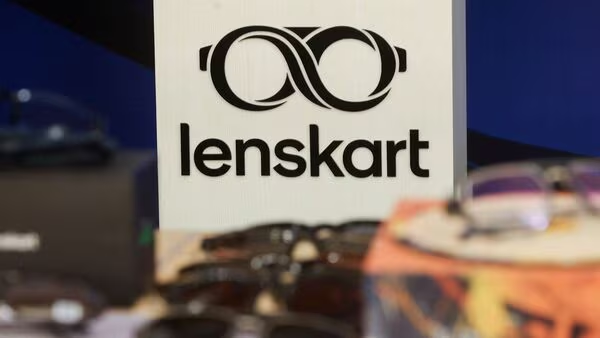India’s largest eyewear retailer, Lenskart, made a quiet and somewhat disappointing debut on the stock market on Monday, 10 November 2025. The company’s shares opened and closed trading below the initial issue price, surprising many investors who had high hopes for the listing. This muted response has raised questions and concerns about the valuation of the company at the time of its Initial Public Offering (IPO).
In this article, we will explain the details of Lenskart’s IPO debut, why the shares dropped below the issue price, and what it means for investors and the company going forward. We will also look at the broader outlook for Lenskart and the growing eyewear market in India.
What Happened During Lenskart IPO Debut?
Lenskart’s IPO was one of the most talked-about listings in India this year. The company has been a leader in the eyewear market for over a decade, growing its presence both online and through physical stores. Many investors were excited about the company’s prospects and expected a strong debut on the stock market.

However, when the shares began trading, they immediately slipped below the price at which they were offered during the IPO. The drop was about 3 to 5 percent and remained around that level throughout the day. This kind of performance is often described as a muted or soft debut, meaning the stock did not gain much momentum or excitement from investors.
This outcome surprised some market watchers because Lenskart had shown impressive growth in recent years. So why did the shares fall below the issue price? The answer lies mainly in concerns about the company’s valuation.

Why Did Lenskart’s Shares Fall Below the Issue Price?
High Valuation Concerns
One of the key reasons for the decline in Lenskart’s share price on debut is that many investors felt the company was priced too high. When a company offers shares to the public for the first time, it sets an IPO price based on expected future growth, earnings, and overall market demand.
Lenskart’s IPO valuation was optimistic, reflecting strong assumptions about how quickly the company could grow and how profitable it could become. While optimism is common in IPO pricing, some investors felt that these expectations were too high or that the risks were not fully accounted for.
When shares are priced higher than what investors are willing to pay, demand drops, leading to a decline in the stock price once trading begins.
Profitability Questions
Another important factor affecting investor sentiment is Lenskart’s profitability. While the company has experienced fast revenue growth over the years, it has also invested heavily in expanding its stores, marketing, and technology. This means that Lenskart has not yet become consistently profitable.
Investors often want to see companies making a profit or a clear path to profitability before committing money, especially at a high valuation. The fact that Lenskart is still working towards profitability made some investors hesitant.
Market Conditions and Investor Sentiment
Beyond company specific factors, broader market conditions can also impact how an IPO performs. In recent times, investors have become more cautious about high growth companies, focusing more on sustainable profits and realistic valuations.
The overall mood among investors may have contributed to the cautious reception of Lenskart’s IPO shares.

What Does the Muted IPO Debut Mean for Investors?
Immediate Impact on Shareholders
For investors who purchased Lenskart shares during the IPO, the drop below the issue price means they experienced an immediate loss on paper. This can be disappointing, especially when expectations were high.
However, it is important to remember that an IPO is just the beginning of a company’s journey on the stock market. Share prices often fluctuate in the early days, weeks, and months after listing.
Long Term View
Looking beyond the short term, many investors see potential in Lenskart’s business model and the growth prospects of the eyewear market in India. The country’s population is growing, awareness about eye health is increasing, and more people are willing to spend money on quality eyewear products.
If Lenskart can continue to grow its revenue, improve profitability, and expand into new markets, its stock price could recover and increase over time.
Investors with patience and confidence in the company’s fundamentals may benefit in the long run.
The Growth Story Behind Lenskart
To understand Lenskart’s potential, it helps to look at the company’s history and how it became India’s largest eyewear retailer.
Founded in 2010, Lenskart started as an online platform selling eyeglasses and sunglasses. It introduced customers to the convenience of shopping for eyewear online, something relatively new in India at the time.
Over the years, Lenskart expanded its offerings and opened physical stores across many cities. This blend of online and offline retail has helped the company reach millions of customers.
Lenskart also invested in technology to improve the shopping experience, including virtual try on features and home eye checkups. This innovation has set it apart from many traditional eyewear sellers.
The Indian Eyewear Market A Bright Future
The outlook for eyewear in India is promising. Several factors contribute to this growth potential
- Increasing awareness More people are becoming aware of the importance of eye health and vision correction. This drives demand for prescription glasses and regular eye checkups.
- Rising middle class As incomes rise, more people are willing to spend on branded and stylish eyewear rather than low cost alternatives.
- Youth demographic A large portion of India’s population is young, and many in this group use gadgets and screens, which can lead to eye strain and vision problems, increasing the need for eyewear.
- Online shopping growth The rise of e commerce in India makes it easier for customers to buy eyewear online, supported by Lenskart’s strong online presence.
- Expanding rural reach Tier 2 and Tier 3 cities in India, which are smaller towns and rural areas, are showing growing demand for quality eyewear.
These factors combine to create a large and growing market that companies like Lenskart can tap into for future growth.

Challenges Ahead for Lenskart
While the future looks promising, Lenskart still faces some important challenges.
Turning Profitable
The biggest challenge is moving from rapid growth to consistent profits. Lenskart has spent heavily on expanding stores, marketing campaigns, and technology development. It now needs to manage costs carefully to ensure its business model is sustainable.
Competition
The eyewear market is becoming more competitive. Traditional optical stores, other online players, and international brands are all vying for market share. Lenskart will need to keep innovating and providing value to stay ahead.
Managing Investor Expectations
After a high profile IPO, the company will be under pressure to meet the growth and profitability expectations set by investors. This can be a challenge for any fast growing company.
What Could Help Lenskart Improve Its Market Performance?
Several strategies could help Lenskart regain investor confidence and strengthen its market position.
- Focus on profitability Streamlining operations and improving profit margins will reassure investors that the company is on a sustainable path.
- Expanding geographic reach Moving deeper into smaller cities and rural areas where eyewear penetration is still low.
- Product innovation Introducing new styles, affordable options, and leveraging technology to enhance customer experience.
- International growth Exploring opportunities in other countries to diversify revenue sources.
- Customer retention Building loyalty programs and improving after sales service to keep customers coming back.
Conclusion
The Lenskart IPO debut was quieter than expected, with shares falling below the issue price amid concerns about valuation and profitability. While this may seem disappointing in the short term, it does not change the fact that Lenskart remains a strong player in a rapidly growing market.
For investors, the key is to look beyond the initial market reaction and focus on how the company performs in the coming quarters. If Lenskart can improve profitability while continuing to grow its customer base, it could still deliver good returns over time.
The eyewear market in India offers huge opportunities, and Lenskart is well positioned to benefit. The coming months and years will show whether the company can meet the high expectations set during its IPO.
Do follow UAE Stories on Instagram
Read Next – Exciting Al Hamra Golf Club Renovation Reopens with Five Stunning New Holes














